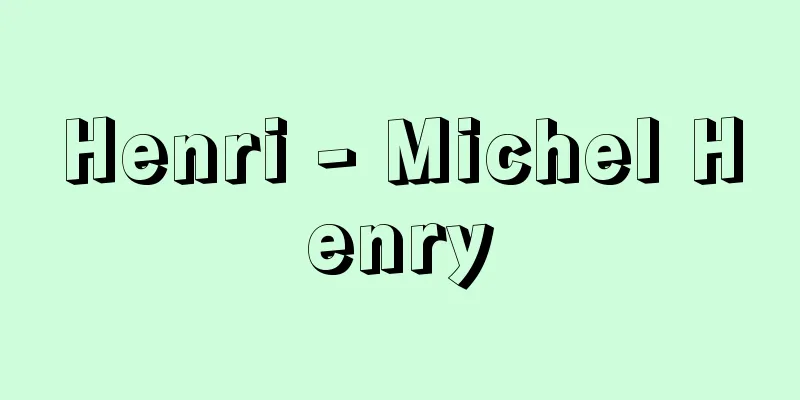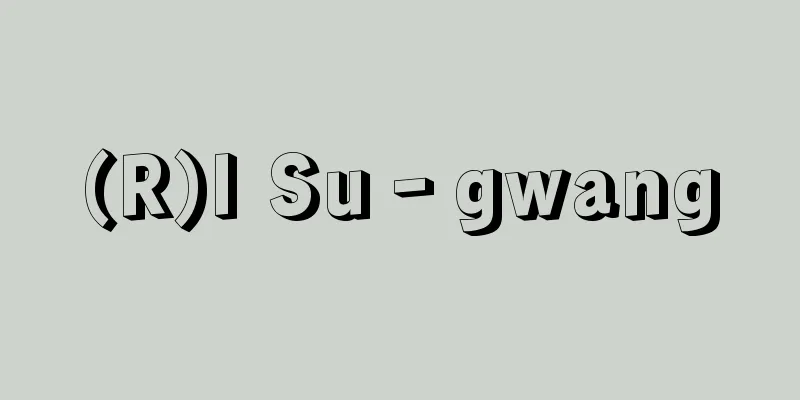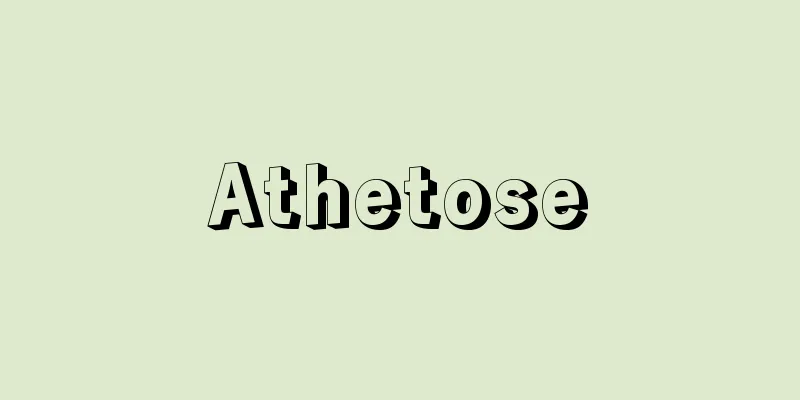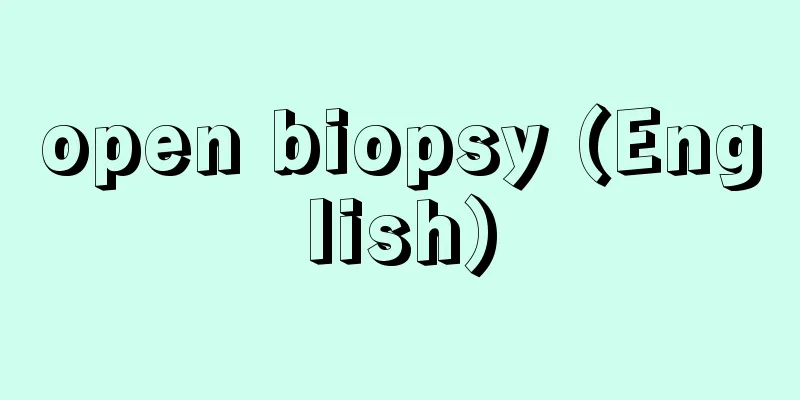Henri - Michel Henry

|
French philosopher. Born in the former French Indochina, he studied at the University of Lille and participated in the Resistance during World War II. He was a professor at the University of Montpellier III until 1978. He is a decisive phenomenologist in that he opened up a new dimension of "life" in phenomenology. "Life" is not a relative one among the various phenomena that phenomenology has taken as its subject, but an absolute one in that whatever appears, the event of "appearing" is always a prerequisite. Henry's only task is to grasp life phenomenologically in this absoluteness. Henry criticizes "classical phenomenology" represented by Husserl and Heidegger as a whole for limiting phenomenality to the "horizon of visibility," but this tendency, called "ontological monism," did not begin with phenomenology, but has been a constraint on Western philosophy since ancient Greece, which has been modeled on vision. In response to this, Henry argues that by carrying out a "thorough reduction," it becomes possible to grasp the way in which life, which is never "invisible" within the horizon of "visibility" opened by intentionality and existence, "appears" prior to intentionality. This invisible phenomenality of life, which is no longer dependent on vision, is described as "affectivity," and its phenomenal structure, which is not mediated by intentionality, is analyzed as "auto-touch," but this concept is completely different from the traditional concept of "auto-touch" in that it does not involve any distinction between the "touching self" and the "inspired self" ( L'essence de la manifestation (1963), Philosophie et phénoménologie du corps (1965)). Henry carried this concept further by tracing approaches to invisible life in Descartes, Kant, Schopenhauer, Nietzsche, and Freud ( Généalogie de la psychanalyse (1985)), and by retracing Husserl's analysis of temporality in order to discover faint traces of life that hide from intentionality ( Phenomenology of the Substantial (1990)). On the other hand, based on this "phenomenology of life," Henry has developed a theory of civilization ( La barbarie (1987)) in which he denounces modern civilization, which is based on science and technology, for having concealed and forgotten life, and a theory of art ( Voir l'invisible (1988)) in which he re-evaluates modern painting, as typified by Kandinsky, as making invisible life visible. He also left behind works that discuss Marxism from the standpoint of "life," such as Marx (1976) and Du communisme au capitalisme (From Communism to Capitalism) (1990). In his later years, Henry began to interpret the phenomenal structure of this "invisible life" that occurs at the root of himself in Christianity, particularly the event of the incarnation of Jesus Christ (called the "transcendental Atomic Son") found in the Gospel of John. God is life itself, and the essence of life is self-revealment, that is, revelation, and this self-manifestation of God is the fundamental event of the incarnation of Jesus Christ ( C'est moi la vérité (I Am the Truth) (1996), Incarnation (2000), Paroles du Christ (2002)). Henry was also active as a novelist, most notably for L'amour les yeux fermés (1976), which won the Prix Renaud Prize. His other novels include Le jeune officier (1954), Le fils du roi (The King's Sons) (1981), and Le cadavre indiscret (The Indiscreet Corpse) (1996). [Shin Nagai, May 19, 2015] "Barbarism: The Dictatorship of Scientism and the Crisis of Culture" (1990, Hosei University Press) translated by Yamagata Yorihiro and Mochizuki Taro (1990, Hosei University Press)" ▽ "The Genealogy of Psychoanalysis: Lost Origins" (1993, Hosei University Press) translated by Yamagata Yorihiro et al. (1993, Hosei University Press)" ▽ "Seeing the Invisible: On Kandinsky" (1999, Hosei University Press) translated by Aoki Kenji (1999, Hosei University Press)" ▽ "Substantial Phenomenology: Time, Method, and Others" (2000, Hosei University Press) translated by Naka Takao, Nomura Naomasa, and Yoshinaga Waka (2000, Hosei University Press) " ▽ "Philosophy and Phenomenology of the Body: An Essay on Biran Ontology" (2000, Hosei University Press) translated by Naka Takao (2000, Hosei University Press)" ▽ "From Communism to Capitalism: Theory of Catastrophe" (2001, Hosei University Press)" ▽ "Marx (1976, Gallimard, Paris)" ▽ "L'amour les yeux " (1976, Gallimard, Paris) fermés (1976, Gallimard, Paris)” ▽ “Le fils du roi (1981, Gaillimard, Paris)” ▽ “C'est moi la vérité; pour une philosophie du christianisme (1996, Seuil, Paris)” ▽ “Paroles du Christ (2002, Seuil, Paris)” “Phénoménologie de la vie, Tome I; De la phénoménologie (2003, PUF, Paris)” ▽ “Phénoménologie de la vie, Tome II; De la subjectivité (2003, PUF, Paris)” [References] | | | | | | | |Source: Shogakukan Encyclopedia Nipponica About Encyclopedia Nipponica Information | Legend |
|
フランスの哲学者。旧、仏領インドシナに生まれ、リール大学に学び、第二次世界大戦中はレジスタンス運動に参加する。1978年までモンペリエ第三大学教授。 現象学に「生」という新たな次元を切り開いた点で決定的な意味をもつ現象学者である。「生」は現象学が主題としてきた多様な現象のうちの一つという相対的な性格のものではなく、何が現象するにしても、「現象する」という出来事が必ず前提しているという点で絶対的な性格をもつ。この絶対性において生を現象学的に捉えることがアンリの唯一の課題である。アンリはフッサール、ハイデッガーに代表される「古典的現象学」を、現象性を「可視性の地平」に限定するものとして総体的に批判するが、「存在論的一元論」と名づけられるこの傾向は現象学に始まったものではなく、視覚をモデルとする古代ギリシア以来の西洋哲学を拘束し続けてきたものだとされる。これに対して、「徹底化された還元」を遂行することにより、志向性や存在の開く「可視性」の地平の内部では決して「見えない生」が、志向性に先だって「現象する」さまをとらえることが可能になるのだとアンリは主張する。もはや視覚に拠らないこのような生の不可視の現象性は「情感性」として記述され、志向性を介さないその現象構造は「自己触発」として分析されるが、それは、「触発する自己」と「触発される自己」の間にいかなる差異も介入しないという点で、従来の「自己触発」概念とはまったく性格を異にするものである(『顕現の本質』L'essence de la manifestation(1963)、『身体の哲学と現象学』Philosophie et phénoménologie du corps(1965))。 アンリはこの構想を、さらにデカルト、カント、ショーペンハウアー、ニーチェ、フロイトのなかに不可視の生への接近を跡づける作業(『精神分析の系譜』Généalogie de la psychanalyse(1985))や、フッサールの時間性の分析を新たにたどり直すことでそこに志向性から身を隠す生のかすかな痕跡(こんせき)を探り出す作業(『実質的現象学』Phénoménologie matérielle(1990))として続行してゆく。他方で、このような「生の現象学」に基づいてアンリは、近代以降の科学技術に基礎を置く文明が生を隠蔽(いんぺい)し、忘却してきたのだとして糾弾する文明論(『野蛮』La barbarie(1987))や、不可視の生を可視化するものとしてカンディンスキーに代表される現代絵画を新たに評価し直す芸術論(『見えないものを見る』Voir l'invisible(1988))を展開している。そのほか『マルクス』Marx(1976)、『共産主義から資本主義へ』Du communisme au capitalisme(1990)など「生」の立場から、マルクス主義を論じた著作も残している。 晩年になるにしたがい、アンリは自己の根底でおこるこの「不可視の生」の現象性の構造をキリスト教、とりわけ『ヨハネによる福音書』にみられるイエス・キリストの受肉の出来事(「超越論的原―息子」とよばれる)の内に読み込んでゆくようになる。神とは生そのものであり、その生の本質は自己をあらわにすること、啓示にあるのであって、その神の自己顕現=啓示がイエス・キリストの受肉という根源的な出来事なのである(『我は真理なり』C'est moi la vérité(1996)、『受肉』Incarnation(2000)、『キリストの言葉』Paroles du Christ(2002))。 なおアンリは小説家としても活動した。とりわけ『目を閉じて愛』L'amour les yeux fermés(1976)はルノード賞を受賞している。そのほかの小説作品として、『若い士官』Le jeune officier(1954)、『王の息子』Le fils du roi(1981)、『不躾(ぶしつけ)な死体』Le cadavre indiscret(1996)がある。 [永井 晋 2015年5月19日] 『山形頼洋・望月太郎訳『野蛮――科学主義の独裁と文化の危機』(1990・法政大学出版局)』▽『山形頼洋他訳『精神分析の系譜――失われた始源』(1993・法政大学出版局)』▽『青木研二訳『見えないものを見る――カンディンスキー論』(1999・法政大学出版局)』▽『中敬夫・野村直正・吉永和加訳『実質的現象学――時間・方法・他者』(2000・法政大学出版局)』▽『中敬夫訳『身体の哲学と現象学――ビラン存在論についての試論』(2000・法政大学出版局)』▽『野村直正訳『共産主義から資本主義へ――破局の理論』(2001・法政大学出版局)』▽『Marx(1976, Gallimard, Paris)』▽『L'amour les yeux fermés(1976, Gallimard, Paris)』▽『Le fils du roi(1981, Gaillimard, Paris)』▽『C'est moi la vérité; pour une philosophie du christianisme(1996, Seuil, Paris)』▽『Paroles du Christ(2002, Seuil, Paris)』▽『Phénoménologie de la vie, Tome Ⅰ; De la phénoménologie(2003, PUF, Paris)』▽『Phénoménologie de la vie, Tome Ⅱ; De la subjectivité(2003, PUF, Paris)』 [参照項目] | | | | | | | |出典 小学館 日本大百科全書(ニッポニカ)日本大百科全書(ニッポニカ)について 情報 | 凡例 |
Recommend
Tanuma [town] - Tanuma
A former town in Aso County in southwest Tochigi P...
Edna C - Edna
In 1791, the plant was named dahlia in honor of t...
Oharida Shrine - Oharida no Miya
The palace of Empress Suiko. According to the &qu...
Light Art
This refers to art that uses various means to cont...
carpet moth
...The forewings are white, but the bottom third ...
Hexagonal Hall
Common name for Chohoji Temple in Domae-cho, Naka...
Cao Yu
Chinese playwright. Born in Tianjin, Qianjiang Co...
The Revised Standard Version of the Bible
…Especially after the publication of the revised ...
Hou Fang Yi - Kouhouiki
He was the first Chinese literary figure in the l...
Sosuke Namiki
A Joruri and Kabuki playwright from the mid-Edo p...
Ainu Language Grammar
…He also established the Batchelor School and con...
Walser, Martin
Born: March 24, 1927. Wasserburg, Lake Constance. ...
Sutherland, EH (English spelling)
... American theories of crime and delinquency in...
Tetraclita squamosa formosana (English spelling) Tetraclitasquamosaformosana
…[Shigeo Gamou]. … *Some of the terminology that ...
Ekkehart IV
...In addition, Roswitha also produced works such...









